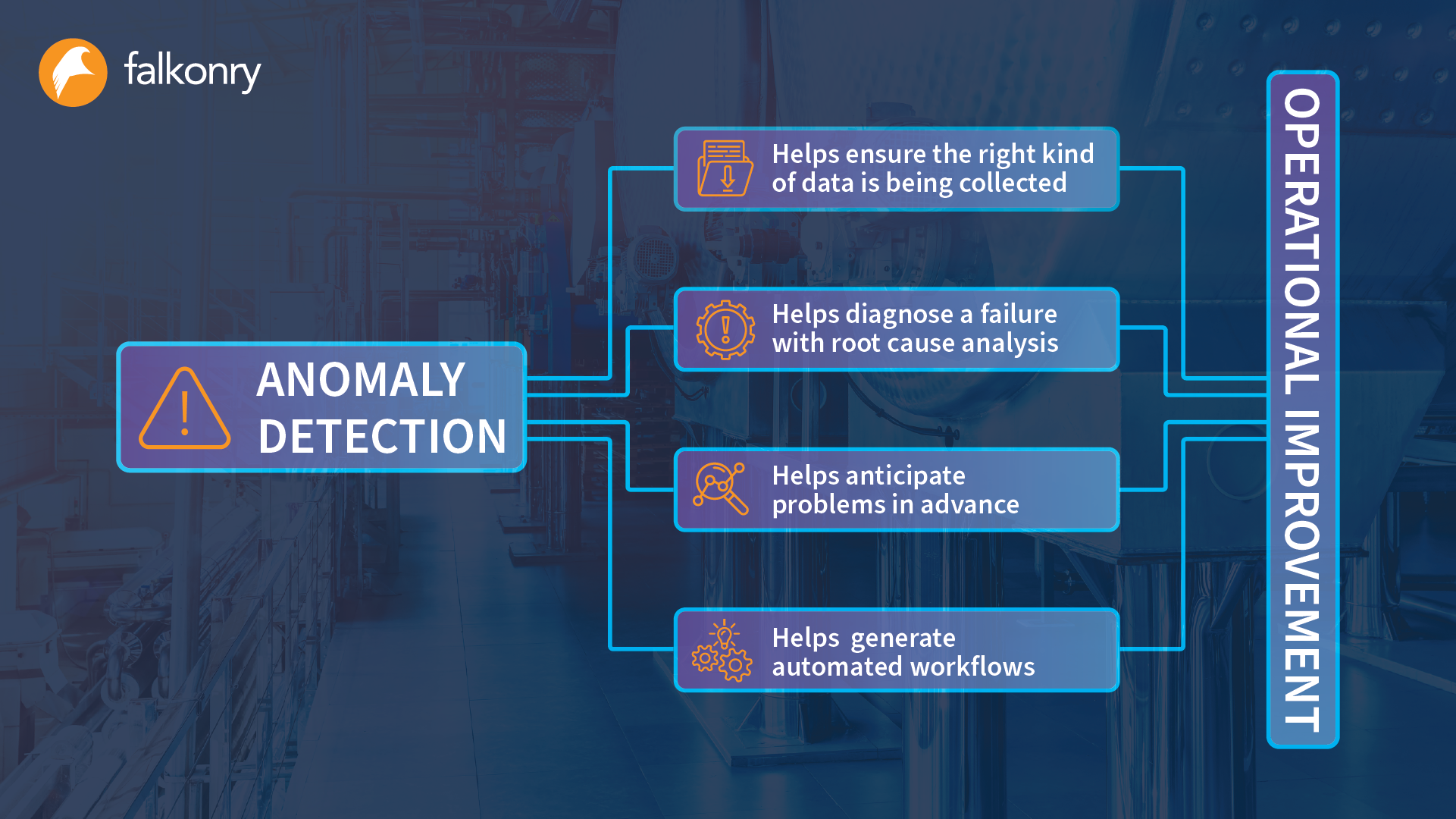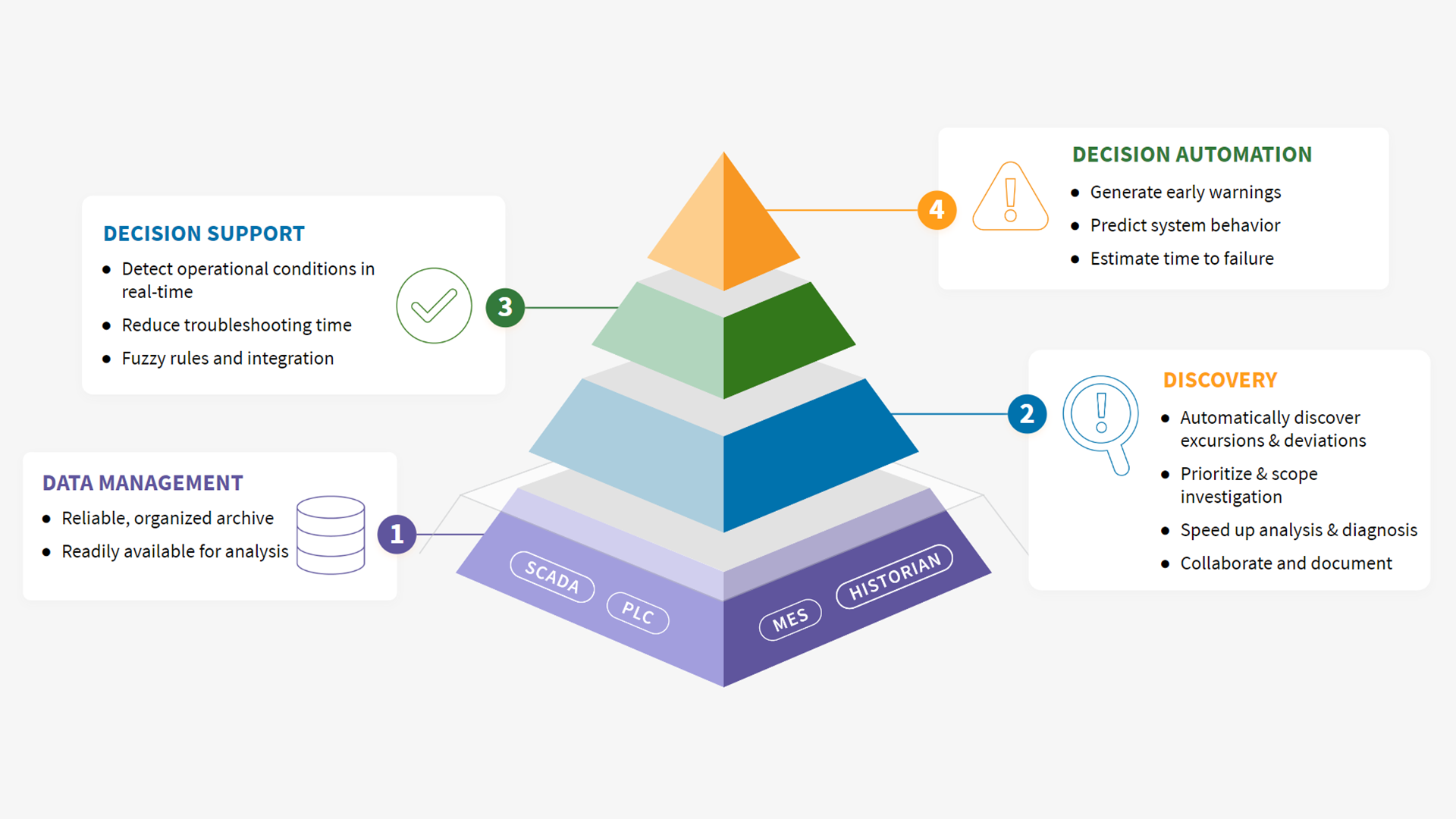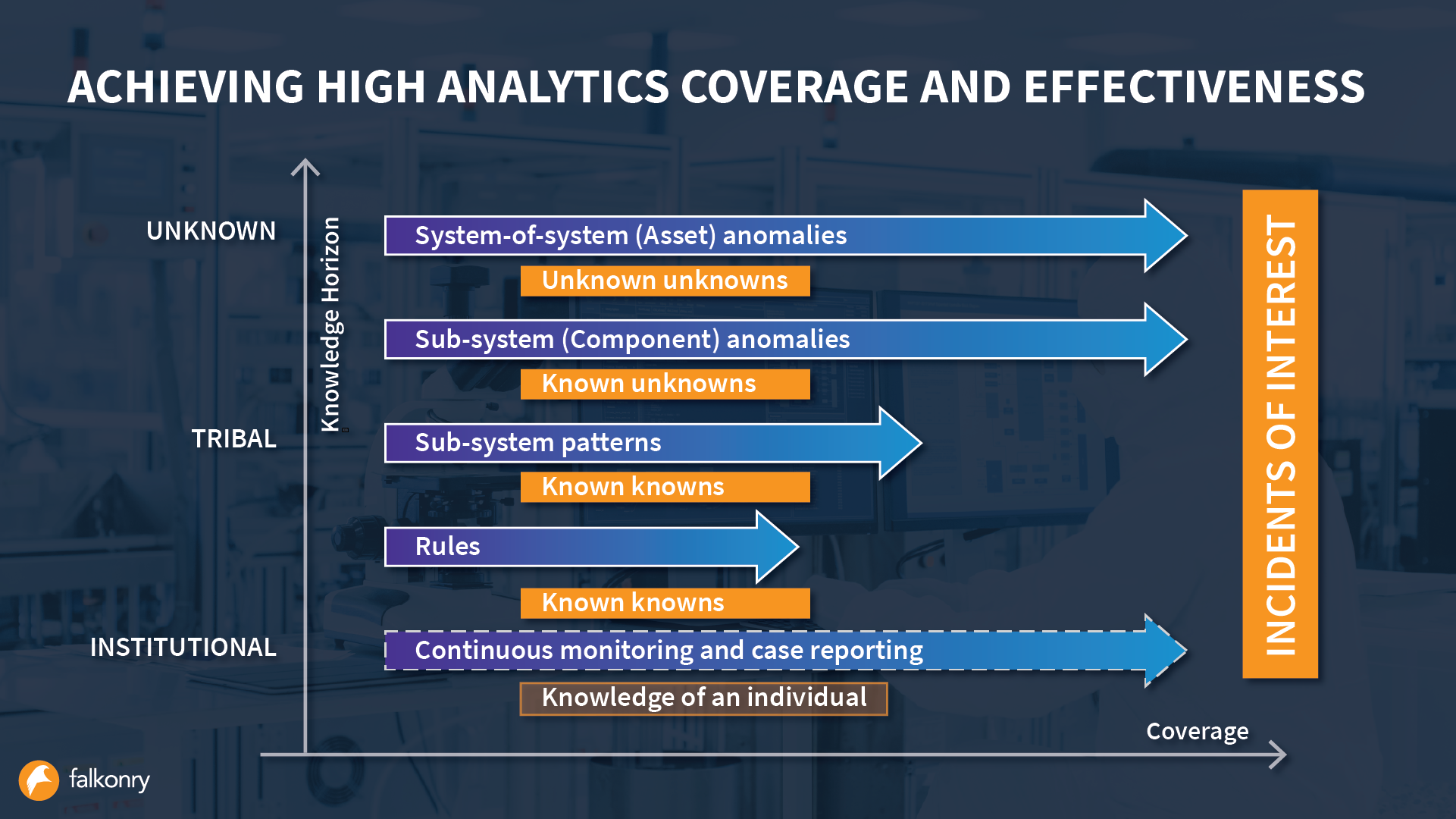Condition Based Monitoring
Condition-Based Monitoring (CbM) is a proactive maintenance strategy that leverages data and real-time insights to monitor the condition of machinery and equipment. By continuously collecting and analyzing data, CbM aims to predict potential issues and address them before they escalate into costly breakdowns or failures. This approach transforms maintenance from a reactive, time-based model to a more efficient, data-driven one.
What is Condition-based Monitoring (CbM)?
Condition-Based Monitoring (CbM) is a maintenance approach that involves monitoring the health and performance of machinery and equipment in real-time. Instead of relying on fixed schedules or running equipment until it fails, CbM uses sensors, IIoT, data analytics, and anomaly detection to continually assess the condition of assets.
By continuously collecting data on parameters like temperature, vibration, pressure, and more, CbM can detect early signs of wear, damage, or performance degradation, integrating anomaly detection to identify deviations from the norm. This enables maintenance teams to take timely corrective actions – reducing downtime, minimizing repair costs, and extending the lifespan of critical assets.
CbM supplies insights on equipment health, based on real-time data, equipping the operations team with the facts needed to make informed maintenance decisions. This method thrives on data, enabling data-driven decision-making.
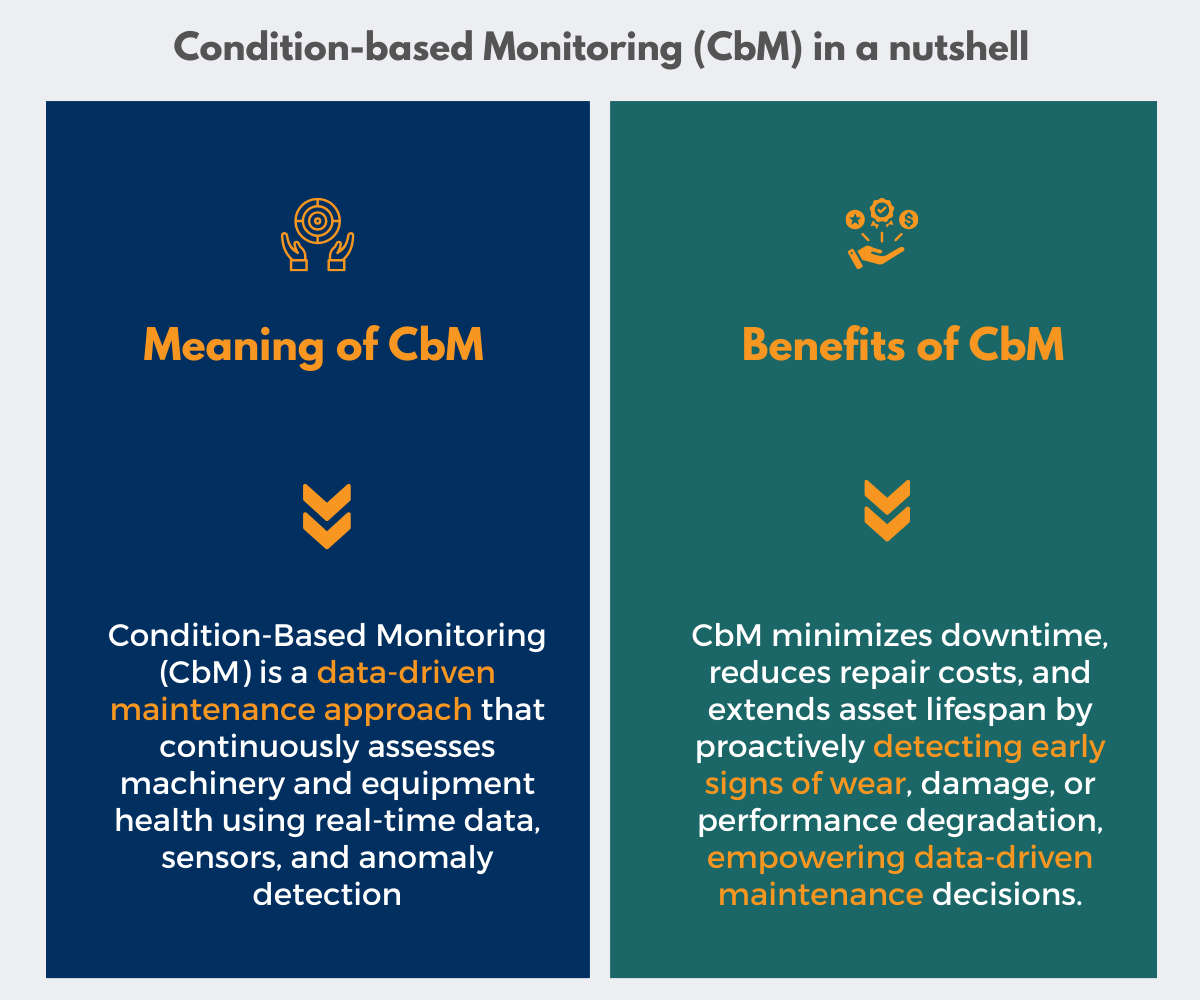
Benefits of Implementing CbM
Implementing Condition-based Monitoring (CbM) yields a number of benefits in the realm of equipment availability and safety. CbM enhances equipment uptime by detecting issues before they lead to failures, ensuring machinery is available when needed. This translates to smoother operations, increased productivity, and optimized asset utilization.
Moreover, by addressing problems proactively, it mitigates repair costs, extends asset lifespans, and efficiently allocates maintenance budgets. CbM also contributes to upping safety by preventing catastrophic equipment failures, and creating a safer work environment for your personnel.
Types of Monitoring Techniques in Condition-based Monitoring (CbM)
In the world of CbM, various monitoring techniques come into play:
Vibration Analysis: This technique measures vibrations to detect issues like misalignment, imbalance, or bearing wear, using anomaly detection to pinpoint unusual patterns.
Thermography: Infrared cameras detect temperature anomalies, shedding light on potential electrical or mechanical problems.
Oil Analysis: By examining lubricant samples, CbM identifies contaminants, wear particles, or deteriorating oil quality.
Ultrasound Testing: This method detects high-frequency sounds emitted by equipment, indicating issues like leaks or electrical faults.
Performance Monitoring: Tracking parameters such as pressure, flow rates, or motor currents is a key strategy to assess performance and detect deviations from expected behavior.
Condition-based Monitoring vs Predictive Maintenance
CbM focuses on real-time data monitoring to oversee the current condition of assets, employing anomaly detection to identify deviations from the norm. Predictive Maintenance (PdM), on the other hand, combines data analysis with machine learning to forecast when maintenance is needed, basing its predictions on historical data and patterns.
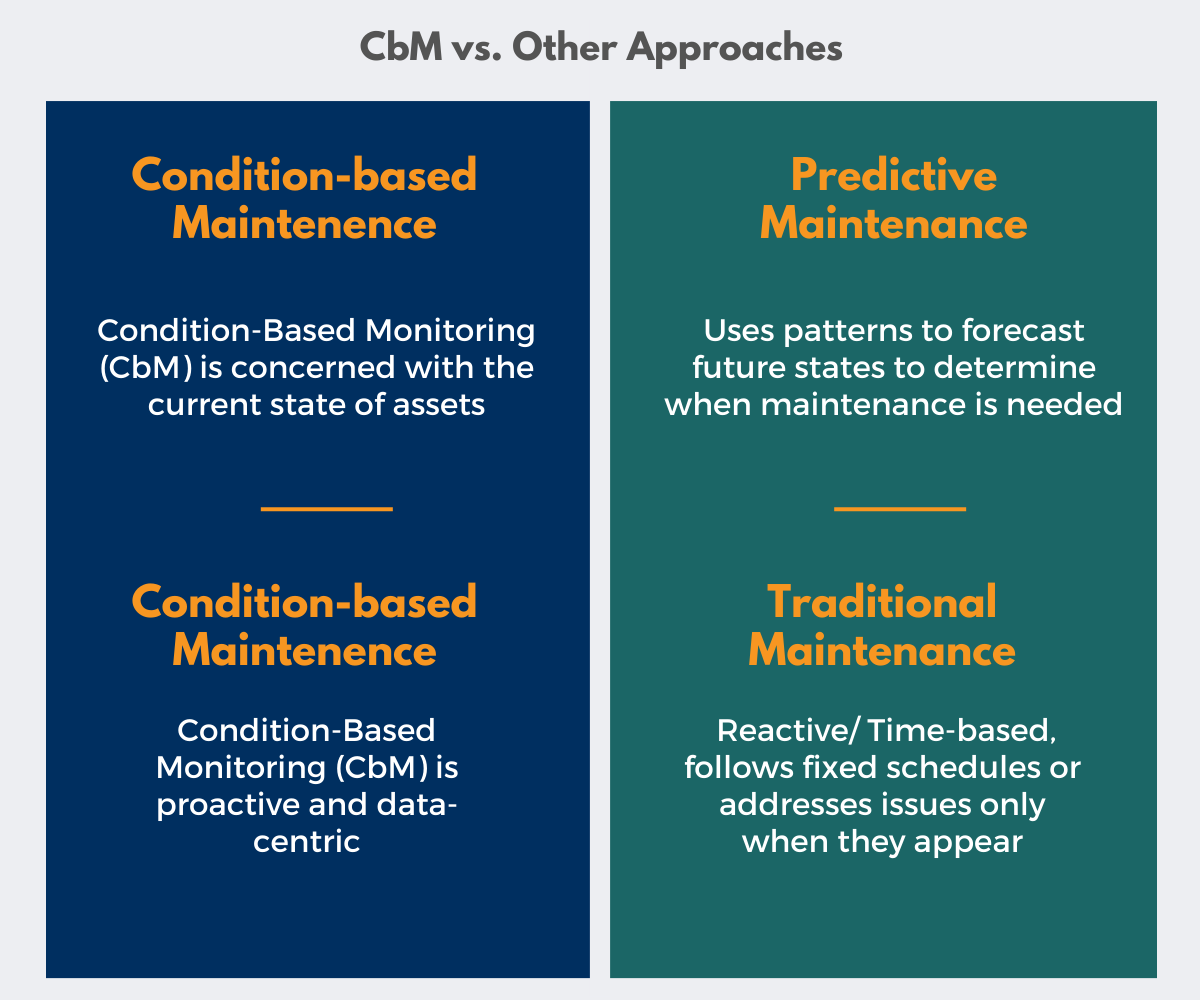
CbM vs. Traditional Maintenance Approaches
In stark contrast to traditional time-based or reactive maintenance, CbM offers a proactive and data-centric approach. Traditional methods rely on predetermined schedules or addressing issues only when they manifest, often missing early warning signs detected by CbM’s anomaly detection capabilities. CbM revolutionizes maintenance efforts by ensuring interventions are executed precisely when necessary, reducing costs, and minimizing downtime. It’s the future of efficient equipment maintenance in today’s data-driven industrial landscape.
How does AI assist in Condition-based monitoring for optimizing the maintenance schedules?
AI plays a pivotal role in elevating Condition-based Monitoring (CbM) to a whole new level. By leveraging the power of artificial intelligence, operations teams get access to equipment behavior trends that help in identifying maintenance needs with unparalleled accuracy. AI algorithms, particularly machine learning and deep learning models, analyze vast datasets from sensors and historical records to discern patterns and anomalies. This capability allows maintenance teams to optimize maintenance schedules by performing interventions precisely when necessary, reducing downtime, and avoiding unnecessary maintenance tasks.
